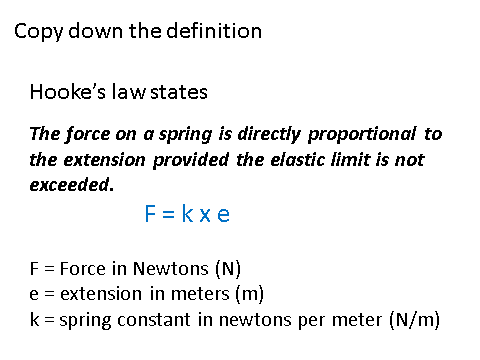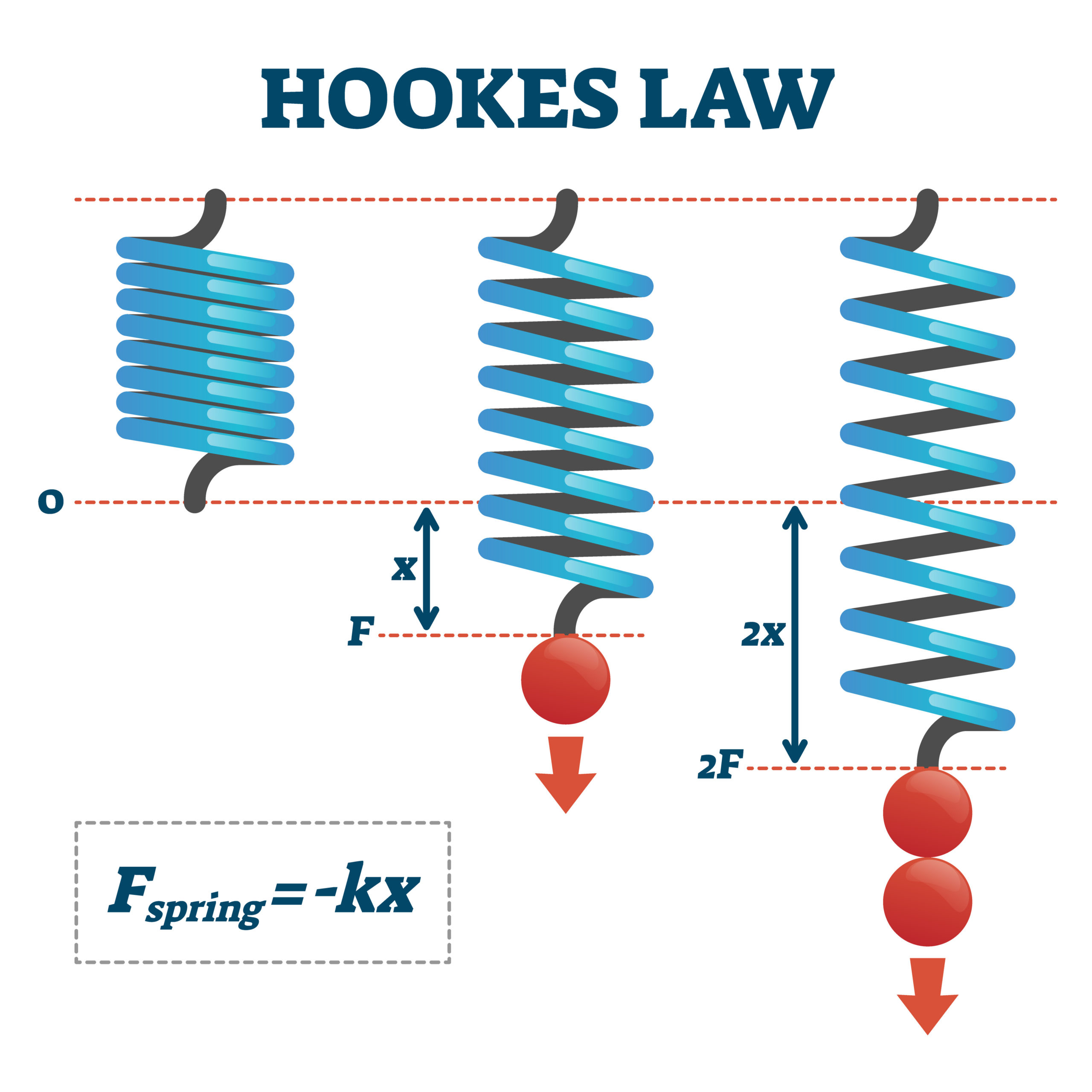Definition of Hooke's Law in Physics
Elastic behaviour Stress-strain relationship Hookes law Youngs modulus bulk modulus shear modulus of rigidity Poissons ratio. Physics science that deals with the structure of matter and the interactions between the fundamental constituents of the observable universe.
Biomeca Understanding Elastic Properties Of The Skin
A body with this ability is said to behave or respond elastically.
. All of these properties come together for a play. To a greater or lesser extent most solid materials exhibit elastic behaviour but there is a limit to the magnitude of the force and the accompanying deformation. It relates stress force per unit area to strain proportional deformation along an axis or lineThe basic principle is that a material undergoes elastic deformation when it is compressed or extended returning to its original shape when the load is removed.
Recall Hookes law first stated formally by Robert Hooke in The True Theory of Elasticity or Springiness 1676. This unit is part of the Physics library. However there arent very many laws in biology.
Elasticity ability of a deformed material body to return to its original shape and size when the forces causing the deformation are removed. In this Law springs are the most used apparatus. M is the magnetic moment.
In the definition for the current loop the Magnetic moment is the product of the current flowing and the area M I A So the unit conferring to this definition is articulated by Amp-m 2. I listed a few of these equations below. Physics is one of the most fundamental branch of Science which deals with studying the behavior of matter.
Youngs modulus E or Y is a measure of a solids stiffness or resistance to elastic deformation under load. Where F is the force x is the extension in length and k is the constant of proportionality known as the spring constant in Nm. The application of all these properties is known as Hookes Law.
The term law has diverse usage in many cases approximate accurate broad or narrow across all fields of natural science physics chemistry astronomy geoscience biologyLaws are developed from data and can. In physics a force is an influence that can change the motion of an objectA force can cause an object with mass to change its velocity eg. Hookes Law is a principle of physics that states that the that the force needed to extend or compress a spring by some distance is proportional to that distance.
Mechanical Properties of Fluids Pressure due to a fluid column. It can also be suggested in terms of torque and moment. Elasticity is the property of solid materials to return to their original shape and size after the forces deforming them have been removed.
B is the external magnetic field. Mathematically Hookes law is commonly expressed as. Sometimes people use the terms principle and law interchangeably.
The main goal is to understand how the universe behaves and how the energy is produced. This helps to define the Laws of Elasticity Torsion and Force. Scientific laws or laws of science are statements based on repeated experiments or observations that describe or predict a range of natural phenomena.
Opens a modal Potential energy stored in a spring Opens a modal What is elastic potential energy. Intro to springs and Hookes law Opens a modal What is Hookes Law. The traditional way to indicate the time-averaged value of a varying quantity is to enclose it in angle brackets.
Moving from a state of rest ie to accelerateForce can also be described intuitively as a push or a pull. The shear modulus is defined as the ratio of shear stress to shear strain. Browse videos articles and exercises by topic.
Hookes Law is recognized as one of the finest principles of Physics. In English units shear modulus is given in terms of pounds per square inch PSI or kilo. In the broadest sense physics from the Greek physikos is concerned with all aspects of nature on both the macroscopic and submicroscopic levels.
Hookes Law states that the strain of the material is proportional to the applied stress within the elastic limit of that material. Let us define the basic hookes law that gives us the definition of the spring constant. Ut tensio sic vis.
Which can be translated literally into As extension so force. A force has both magnitude and direction making it a vector quantity. It is also known as the modulus of rigidity and may be denoted by G or less commonly by S or μThe SI unit of shear modulus is the Pascal Pa but values are usually expressed in gigapascals GPa.
By definition the intensity I of any wave is the time-averaged power P it transfers per area A through some region of space. They are more common in physics and chemistry. Its scope of study encompasses not only the behaviour of objects.
Pascals law and its applications hydraulic lift and hydraulic brakes the effect of gravity on fluid pressure. This law states that. It is measured in the SI unit of newton N.
Where τ is the torque acting on the dipole. The restoring force by the spring is directly proportional to the change in the position and is directed towards the mean position Spring Constant Formula. Hookes law equation provides the given expression for.

The Physics Of Springs How Manufacturers Understand Spring Design

Hooke S Law Gcse Physics Combined Edexcel Revision Study Rocket


0 Response to "Definition of Hooke's Law in Physics"
Post a Comment